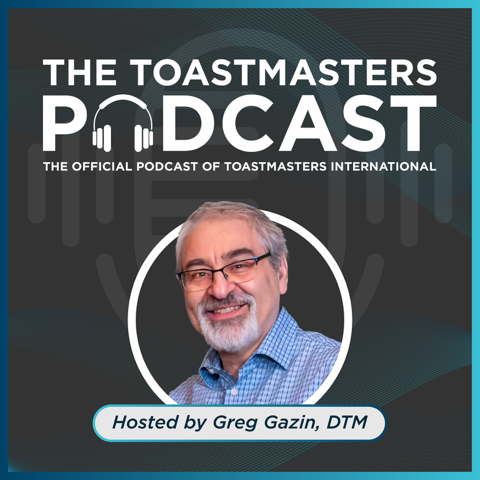Main Menu
- Home
- Meeting Information / Directions
- Contact Us
- Pathways - Toastmasters Educational Program
- Become A Member
- A Typical Meeting
- CLUB MEETING ROLES
- Club Etiquette
- Free Resources
For more information on Toastmasters International, visit www.toastmasters.org
Meeting Information / Directions
Meet Some of Our Members
Here is a list of some of our members who have chosen to make their profiles public.
CLUB MEETING ROLES
MEETING ROLES
Written by Kimman Chan, DTM
- CHAIR
- TOASTMASTER
- SPEAKER
- SPEECH EVALUATOR
- GENERAL EVALUATOR
- AS I SEE IT MASTER
- TABLE TOPICS MASTER
- GRAMMARIAN
- QUIZMASTER
- HUMOURIST
- TIMER
CHAIR
The Chair’s principal role is to organize the meeting. You are also responsible for opening the meeting, leading the Recognition Session, and closing the meeting.
Meeting Organizer: As the meeting organizer, you perform all the behind-the-scene work prior to the meeting to make sure it will come together smoothly. This work involves filling the roster by enlisting volunteers for the different roles, preparing the agenda, communicating with speakers and other members to make sure that all the preparatory work is done prior to the meeting.
The Chair sends out agenda notification 2 - 3 times before the meeting to remind members to sign up for roles.
 Recruiting Speakers
Recruiting Speakers
Check out the agenda on the Friday prior to the meeting. If no one has signed up to be a speaker yet, try to recruit one. You could reach out to newer members who haven’t delivered their Icebreaker speech yet, or a senior member who might be available to deliver a speech, including an old speech they had done before. If nobody signs up to be a speaker by Monday, you might want to check with the VP Education to see if she might be able to invite a guest speaker.
To find out members’ email addresses, log into the website. In the Members Only section, you will see the Private Members Directory tab. Click and you’ll see the contact info for all the members in the club.
Sending out the agenda
It's best to send it out first on the weekend, especially if no one has signed up to be a speaker yet. Then send it out again on Monday and Wednesday morning.
 By Tuesday morning, if there are still vacant roles, please communicate with individual members encouraging them to take on a role. Usually, people are more responsive if you were to write to them individually rather than sending a group email.
By Tuesday morning, if there are still vacant roles, please communicate with individual members encouraging them to take on a role. Usually, people are more responsive if you were to write to them individually rather than sending a group email.
Be politely persistent when inviting members to take on a role. Let’s say you ask someone if they can be the speech evaluator, and they said they’d rather not. Follow up by asking if they would like to be the Quizmaster or Grammarian, provided they haven’t already told you that they can’t make it to the meeting. Go through the process of identifying who might be able to fill the vacant roles until the roster is full.
Ideally, the roster should be filled by Wednesday evening.
Opening and Closing the Meeting
The Chair opens the meeting and invites guests to briefly introduce themselves (their names and what brought them to our meeting). Make sure to preface your invitation for the guests to speak with a time frame. If there are three or more guests, tell them they each have 10 seconds. If there are only 1 – 2 guests, they can each have 20 seconds.
If any individual guest doesn’t follow instruction and goes on past 45 seconds, you’ll need to gently and diplomatically remind them that they need to stop. For example, something to the effect: “If I may interject for a second (or Sorry to interrupt), thanks for your introduction, very interesting! We do have to move on with the agenda, but I look forward to hearing your feedback at the end of the meeting.”
Recognition Session
The Chair is the facilitator of the Recognition Session, where you’ll recognize the achievements of the Featured Speakers, Best As I See It (or Best Table Topics), and Best Evaluator. For details about what you need to do, please check out a very detailed document about this role called TIPS FOR TOASTMASTERS/ CHAIR, in the Members Only section of the website.
TOASTMASTER
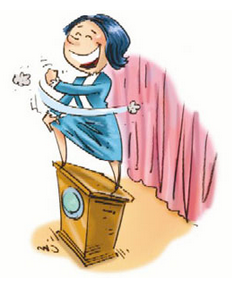 The Toastmaster's role is to serve as the Master of Ceremony of the meeting. There are three main objectives for this role:
The Toastmaster's role is to serve as the Master of Ceremony of the meeting. There are three main objectives for this role:
1) Ensure the meeting runs smoothly by introducing all participants and supplying smooth transitions between speakers.
In a typical meeting, the Toastmaster will introduce each of your team members during the first portion of the meeting (prior to the formal speeches), including the Timer, the Quizmaster, the Grammarian, and the Humorist.
During the Prepared Speech segment, you will introduce the speakers, and invite members and guests to fill out a written evaluation form for each speaker.
During the Impromptu segment, you will introduce either the As I See It Master or Table Topics Master. After that, you will hand the control over the General Evaluator.
It is important for the Toastmaster to be very familiar with the meeting agenda and general rules of club protocol.
2) Introduce the theme of the meeting. You'll have a maximum of three minutes to do so. Some Toastmaster might decide to add 1 – 2 minutes to their theme introduction. If that’s the case, make sure you indicate that on the agenda by modifying the duration ahead of the meeting, and notify the Timer.
3) The third and very crucial role is to manage time. If the meeting is running late, you might need to be brief with your theme introduction. It’s important the meeting ends on time. Depending on how many speeches there are, the meeting should end between 7:30 to 7:45 p.m., in general.
There are a number of unpredictable contingencies that might happen that make the meeting run late, or threatens to strike the meeting off course. These contingencies require that the Toastmaster rise to the occasion and guide the meeting back on track.
Examples of unpredictable contingencies: 
- A meeting might have an unexpectedly large number of guests.
- One guest goes on with their self-introduction, well past the allotted time.
- A speaker experiences technical issues and needs time to fix their problems.
- The Chair did not fill the roster and many roles remain vacant at the start of the meeting.
- Some members who have signed up for roles fail to show up, and the Chair has to spend time enlisting volunteers before the meeting can start.
- A guest or a member becomes aggressive or uses inappropriate language during the meeting. For this scenario, invoke the club's Code of Etiquette.
As the Toastmaster, you’ll need to exercise discretion and make decisions on the spot when these scenarios happen. The more you handle these unscripted moments, the more confident you’ll become as the Master of Ceremony. That’s why the Toastmaster role provides you with excellent opportunities to practice your leadership capabilities in a safe environment.
For a full description of this role, check out the TIPS FOR TOASTMASTER / CHAIR in the Members Only Section.
SPEAKER 
It is important to come prepared as the speaker. Pathways, Toastmasters' online Educational Program, offers tons of information on Base Camp. Once you've launched a speech project, simply go through the instructions including how to prepare and deliver a speech or special projects such as incorporating feedback you have received into your next speech or serving as a speech evaluator.
If you deem it desirable to do so, have a quick chat with your Evaluator before the speech. If you are working on something in particular that you would like the Evaluator to watch for — your tendency to speak too fast, your use of crutch words — bring this up beforehand. Alternatively, if you would like your Evaluator to tread lightly in some area (you have hurt your back and will have to minimize the use of body language), make sure to communicate this to the evaluator beforehand.
Entering Your Speech Project onto the Agenda:
Remember to enter your speech info (speech project, title, duration if different from the minimum requirement), and speech intro onto the agenda.
To indicate what speech project you’ll be working on, click on "Choose Path/ Project":
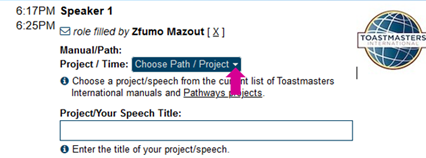
Click on "Collapse All"

Then scroll down and find your path:

Once you've found your path, for example, Presentation Mastery, click on the "+" sign to expand the path so you can find the specific project:

Click on your project (e.g. L1 Icebreaker):

Once you've identified your project (for example, L1 Icebreaker, or L1 Evaluation and Feedback #2), two buttons will appear: "Project Description", and "Evaluation Form":
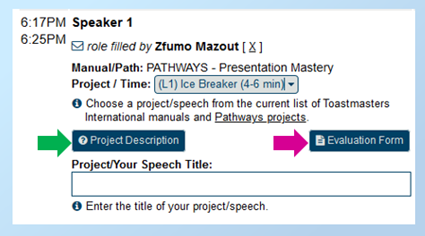
Click on "Evaluation Form" to download a copy, print it before an in-person meeting and bring it to your Speech Evaluator.
Entering Your Speech Introduction:
The speech intro should be written in the third person since it's going to be read by the Toastmaster. It shouldn't be more than 2-3 sentences long, and should give just a hint of what you're going to be talking about. Remember to click on "Update Project/ Speech Details" once you're done.
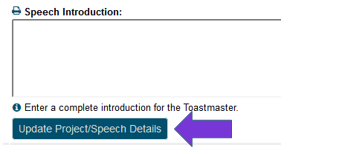
Cancelling Your Speaking Spot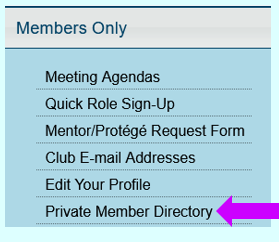
Finally, if you have to cancel your speech for whatever reason, don’t cancel it on the day of the meeting! Filling roles at the last minute can be very difficult; filling a speaking role at the last minute is next to impossible. If you must cancel your speech, do this several days in advance of the meeting so the Chair can make alternate arrangements.
If someone has already signed up to evaluate your speech, please notify them as a courtesy so they will have a chance to sign up for another role.
You can find fellow members' contact information by clicking on the Private Member Directory tab in the Members Only section, which is accessible once you have logged into the website.
SPEECH EVALUATOR:
 Speech evaluation is all about balance. Typically, an evaluator needs to highlight the speaker’s strengths, and offer some suggestions (two would suffice) for improvement. That is a lot to accomplish in three minutes, so it is important not to let any one of the objectives overtake the entire evaluation.
Speech evaluation is all about balance. Typically, an evaluator needs to highlight the speaker’s strengths, and offer some suggestions (two would suffice) for improvement. That is a lot to accomplish in three minutes, so it is important not to let any one of the objectives overtake the entire evaluation.
Some key points to keep in mind are:
- Feedback should be delivered in positive language and with the intent to encourage the speaker to keep on delivering speeches.
- Evaluate to the speaker's experience level. If someone is delivering an Icebreaker speech, be especially encouraging. If a speaker is more experienced, the evaluator could provide a couple more suggestions for improvement. Remember: everyone needs encouragement, even experienced speakers.
- Use "I" statements as opposed to "we". The evaluator can only speak to his/her own opinion and does not necessarily know the audience's opinion.
- A good format to follow is: choose 3 things the speaker did well and 1 or 2 recommendations/ suggestions for improvement.
- Recommendations should be about helping the speaker to get to the next level in their speaking. Remember: Evaluation is done to motivate. It is not a critique.
- Milestone speeches should be celebrated by the evaluator. If it is the last speech of the speaker's path (educational curriculum), be sure to invite the audience to applaud this major accomplishment.
The General Evaluator's role is to give an overall assessment of how the meeting has run during the Evaluation Session of the meeting. The objective is to provide feedback to as many members as possible, but especially the evaluators, on what they have done well and to offer some suggestions for improvement, if appropriate. You could also comment on the overall planning, preparation, atmosphere, dynamics of the meeting.
You start out by explaining briefly what your role entails, and then proceed to introduce the first speech evaluator. Once all the evaluators have finished providing their evaluation, you call on each member of the rest of your team (Quizmaster, Grammarian, Timer) to deliver their reports. After that, you will have 3 – 4 minutes to deliver your General Evaluator report.
It's a good idea to acknowledge those who are tackling their roles for the first time. Remember to end on the positive if you want to point out room for improvement. Like the speech evaluator, your goal is to evaluate to motivate, so the sandwich approach is very effective (start with the positive, then point out areas for improvement, and end on the positive). This is an advanced role, so it's a good idea to have had some experience with many of the roles before taking this on.
AS I SEE IT MASTER
As I See It is a unique feature of the Ottawa Toastmasters Club and provides participants an opportunity to debate a topic (chosen by the As I See It Master), which is usually related to the theme.
The As I See It Master's role is to i) choose the topic to be debated prior to the meeting; ii) present it with a brief preamble during the As I See It segment; iii) pick four volunteers who will proceed to debate the topic; iv) summarize the debaters’ main points at the end of the debate; v) remind members to vote for the Best As I See It.
Timeline:
The As I See It Master has 1 minute to present the question with a brief preamble. At the end of the debate, they’ll have another minute to summarize the debaters’ main points.
Each participant has 1.5 min to present their initial argument. After all the participants have spoken, each is given a 30 second rebuttal.
Choosing the Debate Topic
It is important for the As I See It Master to be specific with the question and clear on the positions for which the participants will argue (i.e., for/against, yes/no).
Example 1: If the theme is Daylight Savings Time, you could say in your preamble: As the Toastmaster mentioned during their theme presentation, some people think we should stop changing the clock twice a year and stick with Standard Time (or Daylight Savings Time). I am looking for four volunteers.Two of you will argue for this position, ie, we should stop changing the clock and stick with Standard Time, and two will argue against it.
It is also advisable to choose a question that is general enough for most people to relate to.
Example of a Question That’s Too Specific
Example 1: Barbie is the best movie ever made. Do you agree or not?
This question is too specific because some people may not have seen this particular movie. Those who haven’t will not be in a position to argue one way or another. Please remember that we have a culturally diverse club. So it’s important to not assume that what seems obvious to you culturally will in fact be known to some other members.
Example 2: Best person to take to a baseball game is your spouse. Do you agree or not?
This question assumes two things: 1) that the participant goes to baseball games, 2) the participant has a spouse.
** As a club, we try to stay away from potentially divisive topics relating to religion, sex, and highly charged political questions.
Order of Debaters
As in a typical debate, the first speaker arguing for the position (first Affirmative Speaker) should begin the debate. This will be followed by the first speaker arguing against the position (first Negative Speaker). After that, the second affirmative speaker, followed by the second negative speaker.
Initial Argument
1. First Affirmative Speaker (for)
2. First Negative Speaker (against)
3. Second Affirmative Speaker (for)
4. Second Negative Speaker (against)
Rebuttal
1. First Affirmative Speaker (for)
2. First Negative Speaker (against)
3. Second Affirmative Speaker (for)
4. Second Negative Speaker (against)
Summarizing the Main Points
After the debate is over, the As I See It Master will give a brief summary of the arguments, by devoting 2-3 sentences to recapping each participant's argument. Please be brief since you’ll have only one minute to do this.
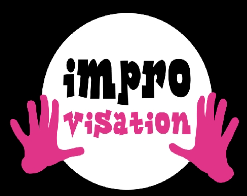
TABLE TOPICS MASTER:
As an impromptu speaking segment,Table Topics is meant to develop members' ability to think on our feet and to learn to present a short and coherent speech even under pressure. The Table Topics Master's role is to prepare questions related to the theme, and pose them to participants during the segment.
Normally, this segment has a duration of 10 minutes. You’ll have time for four volunteers, each of whom will have two minutes to respond to a question that you’ll pose. Prior to the meeting, prepare four different questions related to the theme.
If there is only one speech of standard duration (5 – 7 minutes), you can discuss with the Toastmaster about extending the Table Topics session. For example, instead of recruiting 4 volunteers, you could have 6 – 8 volunteers, thereby enabling more people to participate. If it’s difficult to come up with 6 – 8 questions, you can repeat the 4 questions you have prepared.
Once all the volunteers have participated, you’ll have one minute to do a quick summary for the responses.
As for As I See It, we try to stay away from potentially divisive topics relating to religion, sex, and highly charged political questions.
GRAMMARIAN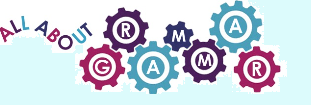
The grammarian role has three parts to it. First is to take note of filler words we often use without being fully aware that we are doing so. These are crutch words such as ‘um’, ‘ah’, ‘like’, ‘so’, etc. The Grammarian tracks occurrences of each filler word and provides an overall tally at the end of each meeting.
Second is to track and report on creative use of the English language: interesting phrases, inventive word choice, and speech creativity in general.
Third, the Grammarian provides the Word of the Week for each meeting. The Word of the Week is generally a word that is less commonly used but not completely obscure. Good examples would be: stupendous, monstrosity, inveterate, tacit.
For an in-person meeting, print out the word and its definition on a piece of letter-sized paper. Make sure the font is big enough to allow people sitting at the back to see it. You can use this Word of the Week Template as a guide.
Prior to the start of the meeting, tape the word to the front of the lectern, so members will be able to see it throughout the meeting. When it's your turn to introduce your role, show your word, go over the definition clearly, and illustrate its use by citing an example or two.
Once the word is introduced, all meeting attendants are encouraged to use the word throughout the meeting.
For an online meeting, use Zoom’s Share Screen function to show the word and your examples. Once you’ve finished your role introduction, type the word into Chat, so people can refer back to it. You can also put the word next to your screen name, so it’s visible.
At the end of the meeting, the Grammarian provides a report tallying crutch words, Word of Week usage, and any creative language or word use that has occurred.
QUIZMASTER
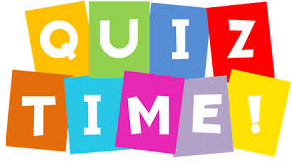 Being an effective speaker is an excellent leadership skill, but a leader should also be able to listen. The act of comprehending and recalling reliably can be key to your professional career (and helpful in your personal life as well). Toastmasters hones your listening skills by assigning a Quizmaster for each meeting.
Being an effective speaker is an excellent leadership skill, but a leader should also be able to listen. The act of comprehending and recalling reliably can be key to your professional career (and helpful in your personal life as well). Toastmasters hones your listening skills by assigning a Quizmaster for each meeting.
The Quizmaster’s job is to make note of various facts and figures mentioned throughout the meeting, and to provide a brief quiz at the end which tests members’ listening and recall skills. A good quiz will have between five to eight questions since you have only 2 minutes. The questions should vary in difficulty—some easy, some moderately challenging, and possibly one or two stumpers.
Be mindful of the timing signals. If the Timer is showing you the red, you'll need to wrap up the quiz even when you still have more questions to ask.
The role of Quizmaster can be taken on by Toastmasters at all levels, from club veterans to brand new members.
HUMOURIST 
Whether you’re lecturing in front of an auditorium or speaking to just a handful of people, injecting humour into your material can be extremely useful. It captures interest; it can provide small breaks within serious, heavy material; and, it’s great for the speaker’s confidence—to hear the instant, gratifying response of an audience laughing.
In a Toastmasters meeting, the Humourist’s job description is simple: start the meeting off with a joke. Finding the joke is the tough part. Unless you have an original joke of your own (and kudos to you if you do), it can be tricky to find one that most people have not heard, which is also appropriate for a general audience.
 Remember to stay away from inappropriate humour, e.g. jokes involving stereotypes about gender, race, ethnic groups, sexual subjects and toilet humour. A good yardstick is to see whether it's something that you can tell without raising anyone's eyebrows in a professional setting. Once you have found the right material, it is a simple role to do.
Remember to stay away from inappropriate humour, e.g. jokes involving stereotypes about gender, race, ethnic groups, sexual subjects and toilet humour. A good yardstick is to see whether it's something that you can tell without raising anyone's eyebrows in a professional setting. Once you have found the right material, it is a simple role to do.
Delivery Tip: Make sure you pause for a second before your punch line or punch word. This makes sure the audience is listening to you and will hear it.The pause will add to the anticipation and the audience will receive it even better once you break the tension by delivering the punch line/ word.
TIMER: 
To be a truly effective speaker, a person should be comfortable speaking at varying lengths: sometimes a longspeech is required, other times a brief toast is more appropriate. It is also important to be respectful of the amount of time you have been given to speak, particularly in formal situations like meetings or receptions.
In Toastmasters, it is the responsibility of the Timer to let all speakers and participants know if they are still within their allotted time. An Icebreaker speech is typically 4 - 6 minutes long, and other Pathways speeches are usually 5 - 7 minutes long. At higher levels, the duration for speeches could be longer. Sometimes, members might request in advance a bit more time for their speeches. Make sure you check the agenda to see how long the speech is expected to be. The speaker’s evaluator is also expected to announce the duration while they go over the speech objectives. If in doubt, check with the Speaker prior to the start of the meeting.
For in-person meetings, you’ll operate the timing device in order to show the time. Try to get to the meeting 10 minutes earlier so you’ll have time to figure out how the timing device works. If it’s a 5 – 7 minute speech, show the green at 5 minutes, yellow at 6 minutes, and red at 7 minutes. Each speaker has 30 seconds grace beyond their allotted time.
For an online meeting, you can upload the 3 timing colors to your image library in Zoom, and then use them as virtual backgrounds while signalling time to the Speakers.
To prepare for performing the Timer role online, please download the following documents: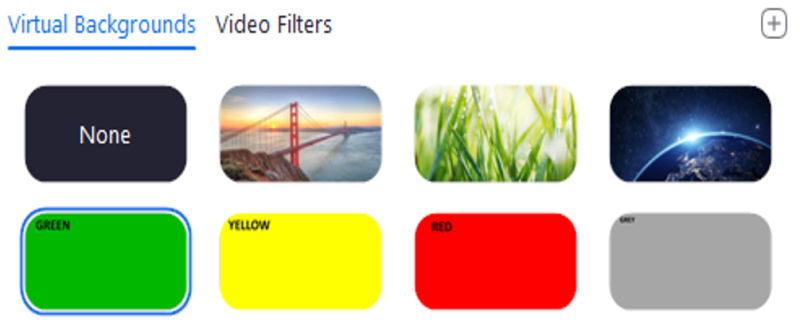
1. How to Be the Digital Timer - PDF
2. Uploading & Using Timing Colors as Virtual Backgrounds - PowerPoint
3. Timing Colors: Grey, Green, Yellow, Red - JPG
I don't usually bother showing the grey. If you want to, you'll show it from the moment the speaker starts till just before they've reached the minimum time. For a 4 - 6 minute speech, you'll show the grey from 0 minute to 3:59. At 4 minutes, you'll show the green. More instructions below.
Introducing the Timer Role
The Toastmaster will ask you to introduce your role. You can say something to the effect (but feel free to tweak it or say it in your own way):
**Example of Timer Role Introduction
At Toastmasters, we learn how to speak with confidence. Another important thing we learn is to speak within our allotted time, so that our meeting doesn't go overtime. As Timer, I will help you to fulfill that objective by showing you timing signals throughout the meeting.
For Patrick's Icebreaker speech, the duration will be 4 - 6 minutes. At 4 minutes, I'll show you the green. At 5 minutes, I'll show you the yellow.At 6 minutes, I'll show you the red, at which point the speaker will have 30 seconds of grace to wrap up.
Ellen's speech will be 5 - 7 minutes. I'll show the green at 5 minutes, yellow at 6 minutes and red at 7 minutes.
For Table Topics
Each participant will have 2 minutes. I'll show the green at 1 minute, yellow at 1:30, and red at 2 minutes.
For As I See It
Each participant will have 1.5 minute for the initial argument. I'll show you the green at 1 minute, yellow at 1:15, and red at 1:30. For the rebuttal, you'll have 30 seconds. So green at 15 seconds, yellow at 22.5 seconds, and red at 30 seconds.
** End of Example of Timer Role Introduction
Delivering the Timer's Report
During the General Evaluation session in a regular meeting, the General Evaluator will ask you to report on the times taken by the different speakers. Therefore, you'll need to record the times throughout the meeting. The time allotted for each role is indicated on the agenda.
The most important times to report on are: the speakers' time, the evaluators', and the Table Topics (or As I See It participants.) You'll only have two minutes to deliver your report. So after reporting on the above-mentioned, your time will probably be up.
Checking the Agenda Before the Meeting
Sometimes, the Toastmaster might change their theme presentation from 3 to 4 or even 5 minutes. Best would be to check the agenda before the meeting to make sure what the duration will be.
Written by Kimman Chan, DTM
Last updated: 2024-12-04
TOASTMASTERS INTERNATIONAL'S MEETING ROLES PAGE
To take a look at meeting roles as defined by Toastmasters International, check out this link: https://www.toastmasters.org/membership/club-meeting-roles
Downloads
| Type | File Name / Description | Size |
|---|
UNSUBSCRIBED
Thank you for your request to be removed from our mailing list. We are sorry to see you go.
Please contact a club officer or the website administrator if you change your mind.




